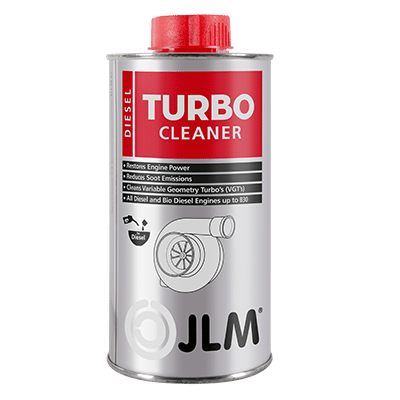If you own a road vehicle, you should have heard of an MOT. If not, chances are you could be breaking the law. MOT tests are a legal requirement, but what actually are they?
In this guide, we will give you an overview of the MOT test, including what is checked, how long they take, and why they are so important.
WHAT IS AN MOT TEST?
An MOT test is a compulsory, annual assessment that determines whether road vehicles are safe to drive. The test looks at compliance with road safety standards, as well as the environmental impact your vehicle is having.
Your car will be required to have an annual MOT test from the third year after its registration.
WHAT DOES MOT STAND FOR?
Named after the government department that introduced the test, MOT stands for Ministry of Transport. The test was established in 1960, with the purpose of assessing overall vehicle safety, exhaust emissions, and roadworthiness.
WHAT DOES IT MEAN TO BE MOT EXEMPT?
There are a number of vehicle types that are not required to carry a valid MOT test. These include:
- Cars that have not yet reached three years from registration
- Vehicles that were first registered more than 40 years ago, as long as no substantial changes have been made in the last 30 years
Substantial changes generally refer to the replacement of components such as the engine, axles, chassis, and similar.
Note: Even if your vehicle is exempt from an MOT, you must still keep it in a safe, roadworthy condition at all times.
HOW LONG DOES AN MOT TAKE?
On average, you can expect an MOT test to take between 45 and 60 minutes, although you’ll likely be without your car for a bit longer than this.
Test centres often request you drop your vehicle off first thing in the morning, and will notify you once the test has been completed. If your vehicle is having a service alongside its MOT, this naturally will take longer. You should expect to be without your vehicle for the majority of the day, and plan your travel accordingly.
Additionally, if your vehicle were to fail its MOT test, you will not be permitted to drive it away until the issues are resolved. The only exception to this will be if you are driving directly to a garage for repairs.
WHAT IS CHECKED DURING AN MOT?
Aside from a few key components such as the engine, gearbox, and clutch, an MOT test consists of a comprehensive evaluation of your entire car. This includes, but is not limited to:
- Steering and suspension
- Seats and seatbelts
- Lights (front, indicator/side, rear, and registration plate)
- Mirrors (interior and exterior)
- Front and rear windscreen
- Wheels and tyres
- Doors, boot lid, loading doors, and bonnet
- Brakes
- Fuel system
- Body and structure
- Battery and wiring
- Exhaust and emissions (including the catalytic converter)
Checks will be made to assess any general wear and tear, structural damage, and system faults that may make your vehicle dangerous to drive.
THE IMPORTANCE OF VEHICLE EMISSION CHECKS
One of the key culprits of a failed MOT test are emission checks. These ensure the amount of harmful pollutants being expelled into the atmosphere are kept to a minimum.
In May of 2018, regulations around vehicle emissions were tightened, resulting in an increase of emission-based failures. This has largely impacted diesel vehicles, which will now fail an MOT at the sight of any visible smoke emissions from the tailpipe. You can prevent this from happening to your vehicle with the use of JLM Emission Reduction Treatment, also available for petrol vehicles.
WHAT SHOULD I DO TO PREPARE FOR MY MOT?
Nobody wants to pay for an MOT only to fail on small things that could have easily been avoided. Something as simple as checking that your engine oil levels are correct, as well as your screen wash and antifreeze, can increase your chances at an easy pass.
Additionally, check your lights before you head to your test. Broken or blown bulbs are very common, and an easy thing to miss—but they can be just as easy to replace.
DO I NEED TO TAKE ANYTHING TO AN MOT?
You are not required to bring any documents with you to your MOT test. You may wish to bring your previous MOT certificate, but this is not compulsory.
HOW MUCH IS AN MOT?
Depending on where you go for your MOT test, the price may vary, but you will never pay more than the maximum amount determined by the government. This differs depending on your vehicle class.
The maximum fee for a standard car is currently £54.85, with the standard motorbike MOT costing no more than £29.65.
WHAT IF MY CAR FAILS ITS MOT?
First and foremost, you will not be permitted to drive your vehicle once it has failed its MOT, unless your previous certificate is still valid. (Similarly, if your MOT has expired, you will not be able to drive your vehicle).
You can apply for a retest once any repairs have been completed. In the meantime, you may only drive your vehicle to the garage where the repairs are done, and back to the MOT test centre (if not the same place).
The cost of a retest will depend on whether you have your vehicle repaired in the same garage as the MOT, and if carried out within 10 days of the original test. If both of these criteria are met, you may be entitled to a free retest.
BE MOT READY WITH JLM
Pass your MOT first time, every time with the help of JLM additives. Specially formulated products, such as our Petrol Injector Cleaner, can help reduce emissions, limit fuel consumption, and keep your engine running smoothly.

